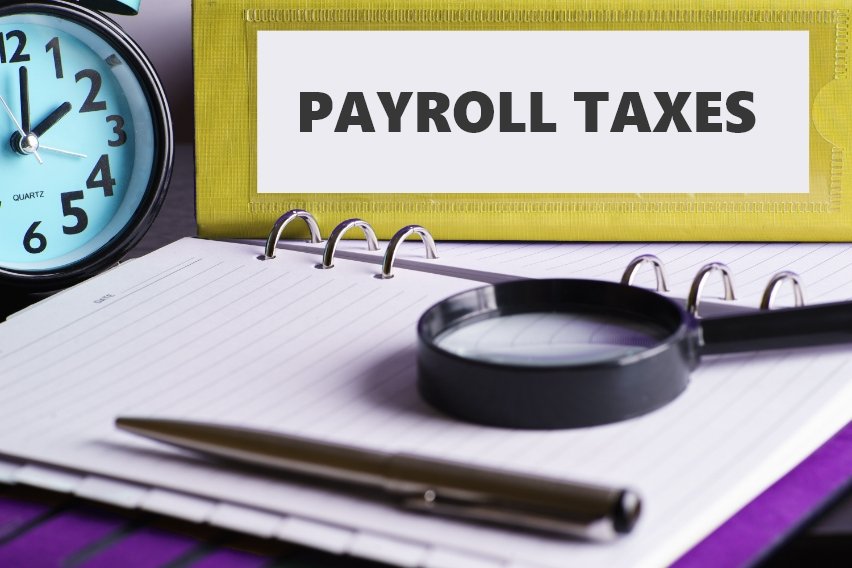How to Do Payroll Yourself for Small Business

Bringing new employees on board is a sign of growth. Yet, as a business grows, so do the admin responsibilities. Processing payroll is undoubtedly among the crucial tasks in that regard.
While you need plenty of time and energy to run payroll, the task is manageable if you understand it. With the proper knowledge and a thorough approach, you can pay employees on time, take care of taxes, and get everything in order.
Continue reading to learn all about doing your own payroll.
Table of Contents
How to Process Payroll Yourself
Easy Alternatives You Should Try
How to Process Payroll Yourself
The first thing a business owner needs to run payroll is proper organization. This aspect relates to every other step in the payroll process.
Everything else will depend on performing the precise steps at the right time. This includes completing the proper forms and paying payroll taxes. You’ll also need to know the necessary payroll deductions.
Here’s a list of tasks necessary to run payroll:
- Form W-4 completion
- Employer identification number signup
- Choosing a schedule
- Calculating the income tax
- Paying payroll taxes
- Filing tax forms
- Form W-2 completion

Have All Employees Complete a W-4 Form
The W-4 form helps determine state and local taxes withheld from an employee’s gross pay. If employees haven’t changed jobs since completing the form, they don’t need to complete it again. It’s worth noting that the IRS revised the W-4 in 2020.
The updated form doesn’t ask for personal or dependency exemptions. This information isn’t relevant for tax withholding purposes. Employees need to state if they claim any dependents. Plus, they can adjust the withholding amount if they’re eligible for tax deductions or hold a second job.
Getting precise W-4 information is crucial for business owners. This info helps to calculate tax withholding. Employees benefit from W-4 revisions, too, as they can use the form strategically.
In particular, completing the new W-4 form may exempt employees from extra taxes. Alternatively, it could make them eligible for year-end tax returns.
Find or Sign Up for Employer Identification Numbers
Every business with salaried employees needs an employer identification number (EIN). The EIN is for businesses what a social security number is for individuals. Using this 9-digit number, the IRS can perform business identification. This helps them determine tax payments.
If a business is paying employees, the law requires them to apply for an EIN. The number is necessary for payroll tax purposes even if there’s only one employee in the company.
Sole proprietors don’t need to file for an EIN. They can use their social security number instead. However, an EIN can be helpful even in those cases, as it helps business owners separate personal and business finances.
Rules about EINs apply to household employers as well. For instance, an EIN is necessary for paying employees like house assistants or nannies.
Getting an EIN isn’t complicated. Employers can complete the process online using the IRS website. The necessary information includes the following:
- Business type (whether it’s a sole proprietorship, LLC, corporation, or other)
- The business address
- The reason for the EIN request (it’s usually to hire an employee)
- Additional business details
Registering an EIN via the website is the fastest option. There are alternative ways to register through mail or fax, although they might take more time.
Choose Your Payroll Schedule
You can manage payroll following a particular schedule. The schedule refers to the frequency of the given pay period. This can be weekly, biweekly, or twice or once monthly. Every employer is free to choose the pay schedule for their business.
The schedule will depend on payroll calculations relative to the business’s cash flow. Simply put, a particular plan will work well for one company and be incompatible with another. It will come down to how often the business can afford to pay employees monthly.
Determining the pay period will depend on the following factors:
- Federal income taxes
- State income tax
- Social Security and Medicare (FICA) taxes
- FUTA tax payments
- State unemployment tax (SUTA)
- Contractor payments
- Direct deposit fees
- Expenses for mailing employee paychecks
Some states may have particular requirements regarding the pay period. For example, California, Massachusetts, New York, and several others mandate minimum weekly payments.
You should keep the payroll records up to date with all details. Federal, state, and local requirements may apply depending on how long you need to hold on to payroll records.
Calculate and Withhold Income Taxes
Calculating payroll taxes is undoubtedly the most complex part of the payroll process. Business owners must calculate each employee’s gross pay and federal income tax. They also have to account for tax deductions and withhold the exact payroll tax.
Federal and state income taxes are easier to calculate using the W-4 form. This form reveals important information that impacts the total tax payments and withholds:
- Marital status: Payroll taxes will differ for single, married, and widowed employees.
- The number of jobs the employee and their partner hold: This information will impact tax withholds.
- Dependants: If the employee has dependents, their payroll tax liability may be smaller.
- Additional payroll tax: The employee might want the business to withhold an extra amount, which is optional.
The W-4 form has a helpful table for calculating payroll tax. The table is on the last page of the document and can clarify the tax situation. Still, manually calculating taxes for payroll is a complicated process. Many employers will use payroll software to ease the process.
With the appropriate payroll software, the employer needs only enter the correct data. The software will calculate the exact amount automatically. This way, covering your federal, state, and local income taxes becomes easier.
Pay Payroll Taxes
The federal income tax isn’t the only obligation of the employer. FICA taxes—Social Security tax and Medicare tax—count as well. FICA stands for Federal Insurance Contributions Act. Fortunately, these components of the total payroll tax are flat. In other words, they’re the same for all employees.
FICA taxes for 2024 amount to 7.65% of an employee’s paycheck. The precise amount may change, so it’s best to keep up with yearly trends.
Once the business withholds the payroll tax, it must deposit it according to the IRS schedule. Businesses that file payroll taxes up to $50,000 must deposit monthly. Deposits are semiweekly for filed taxes over $50,000.
Per tax filing deadlines, deposits are due on workdays, excluding holidays and weekends. The deadline for semiweekly deposits is three business days. Monthly deposits are due every 15th of the month.
Federal unemployment taxes are different. Businesses need to pay federal unemployment tax quarterly. The deadlines are April 30, July 31, October 31, and January 31.
File Tax Forms & Employee W-2s
If you successfully find your way through the payroll system, you’ll need to file appropriate tax forms. This process won’t make doing your own payroll any easier. But it’s necessary for large and small business owners alike.
The good news is that, as the payroll provider, you can access the necessary files relatively quickly. The documentation is available online from the IRS website. The IRS updates most forms every year. Even if you’ve been processing payroll and taxes for a long time, you’ll need a fresh copy of the documents.
The easiest way to file for federal and state taxes is to do so online. You can fill out the IRS host forms on the website. It would be best to download the document instead of completing it on the page. That way, you won’t lose any changes if your browser crashes.
Moreover, when filing taxes, it’s crucial to be aware of potential tax deductions for W-2 employees. Understanding these deductions can optimize the filing process and help both the employer and employees save on taxes.
The W-2 form will be among the most important documents you’ll need to file. This form is critical because it contains vital information about:
- Employer
- Company
- Employee
- Salary
- Paid taxes
The W-2 form is important for everyone—the company, business owner, and individual employees. It’s a summary of each employees’ gross pay, received income, and taxes. There are other forms employees might have, but the W-2 is the most common.
In fact, many resources may refer to a traditional worker as a “W-2 employee.” Employers hire W-2 employees to work under specified conditions. The employer provides the means of work like tools, software, computers, and office space.
Besides the employees’ paychecks, W-2 workers enjoy other benefits. These may include overtime pay, vacation days, insurance, and more. The employer is usually responsible for issuing the W-2 form and monitoring its filing status.
Easy Alternatives You Should Try
It’s no surprise that doing your payroll manually sounds like a headache. You need to mind the gross pay of your employees and Social Security and Medicare tax forms. And you have to keep each pay period on track. Plus, if you have hourly employees in addition to regular workers, everything gets more complex.
And that’s not all.
Payroll processing might be too much for someone running a small business. Luckily, you don’t have to handle it yourself. There are alternatives that make the payroll system less daunting. The most popular options are to use a payroll service or hire an accountant.
Use a Payroll Service
Payroll services manage payroll and accounting activities for small businesses. The service works as a partner to a small business. It can often save precious resources like time and money. Besides leaving you free to run your business, a good service will make your payroll accurate and on time.
This kind of service can do more than handle payroll. Other processes these services may cover include:
- Tax withholding
- Tax filing
- Wage garnishments
Plus, a quality service may provide additional technologies. For instance, specialized tools make employee hourly reports easier. Other services can organize payroll reports.
A professional employer organization (PEO) can be an excellent partner for small businesses. These services can process payroll and provide additional benefits like HR support.
Saving the resources you’d spend on processing payroll is a massive benefit. But even if you can afford the time and money, you likely aren’t an expert. Professionals working for payroll companies are just that. They can ensure complete federal and state law compliance.
You can also grant your employees access to payroll direct deposit and online tools. As a result, they can manage their finances easier. Finally, you can take care of your employees’ pay with absolute certainty. This will significantly reduce the everyday stress of running a business.
Before hiring a payroll company, you’ll want to ensure their services align with your needs. It would be best to list the areas that the service needs to cover. You might need a payroll-only service or a more substantial solution. The latter could be a PEO with HR support, employee benefits, safety, and/or workers’ compensation.
Hire An Accountant
Of course, hiring an accountant comes at a cost. But the benefits can easily outweigh the expense. The accountant can track your profits and losses, handle owed and received payments, and do the payroll.
Your accountant can also file taxes efficiently. They might maximize deductions and minimize your cost. In addition, they can handle the company’s assets, allowing you to get the most out of them.
Accountants can make onboarding easier, too. They can help you in classifying new employees or contractors according to IRS guidelines. Your accountant will also ensure everyone signs the right paperwork.
Finally, an accountant can perform sales charts and income report analysis. They can provide valuable insight into your business model and its effectiveness.

Key Takeaways
The most important aspect of doing payroll yourself is to be organized. Collect all of the paperwork and get informed on proper procedures.
You’ll need to ensure all W-4, W-2, and tax forms are present. You and your employees should fill out the respective forms and get them ready for tax submissions. You’ll also have to get your EIN ready to ensure compliance.
Pay particular attention on calculating and paying taxes. If you have any doubts about the process or regulations, don’t hesitate to get professional help.
FAQ on Payroll
Is It Hard to Do Payroll Yourself?
Doing payroll yourself is complex and takes up resources. If you’re exceptionally good at organization and paperwork, the process might seem straightforward. However, it will be hard for most.
Do I Need Payroll For One Employee?
If that one employee is you, there’s less payroll work involved. But if you’re hiring another person, you’ll need to do payroll for them.
How Much Does Payroll Cost For a Small Business?
The average payroll for small businesses can cost up to $150 per month.
Do I Need a Payroll Service to Pay Myself?
You’ll have fewer payroll tasks if you aren’t covering other employees’ wages.
RELATED ARTICLES

 Payroll Accounting: Definition, Importance & Setup Process
Payroll Accounting: Definition, Importance & Setup Process What is a Payroll Card & How Do They Work?
What is a Payroll Card & How Do They Work? Back Pay: Definition, Process & Best Practices
Back Pay: Definition, Process & Best Practices Payroll Taxes: What Are They & How to Calculate Them
Payroll Taxes: What Are They & How to Calculate Them How To Pay Independent Contractors In 2025
How To Pay Independent Contractors In 2025